2ND TERM
2ND TERM
SCHEME OF WORK:
WEEK TOPIC
1. Revision of first term year work
2. Fatigue, Rest and Sleep-(a) Meaning, Causes and effects of fatigue, (b) prevention of Fatigue, (c) meaning and importance of rest and sleep, (d) guidelines for rest and sleep.
3. Personal clothing-
(a) meaning of clothing and reasons for wearing clothes,
(b) guidelines for choosing and wearing decent clothes
(c) Care of Clothes. E.g. airing, proper storage, cleansing of shoes. (d) Washing of under- wears.
4. Use of cosmetics and deodorants- (a) importance of cosmetics,(b) points to consider in choice and use of cosmetics and deodorants,(c) procedures for applying cosmetics and deodorants, (d) indigenous cosmetics.
5. Healthy feeding habits: ( a) meaning and functions of food,(b) good feeding habits and table manners.
6. The family: (a) meaning, types and functions of the family, (b) roles of each family member and the family as a whole. (c) relationships- the family tree. (d) Family values.
7. The home: (a) meaning and characteristics of a home. (b) Differences between a home and a house. (c) Domestic violence and the consequences and solutions to domestic violence.
8. Housing the family-(a) Types of houses. (b) Location and choice of a family house (factors that influence the choices).
9. Family needs and resources-(a) meaning and types of family needs. (b) Meaning, types and characteristics of family resources.
10. Decision making: (a) meaning and steps in decision making. (b) Simple personal decisions.
11. Revision.
WEEK TOPIC
1. Revision of first term year work
2. Fatigue, Rest and Sleep-(a) Meaning, Causes and effects of fatigue, (b) prevention of Fatigue, (c) meaning and importance of rest and sleep, (d) guidelines for rest and sleep.
3. Personal clothing-
(a) meaning of clothing and reasons for wearing clothes,
(b) guidelines for choosing and wearing decent clothes
(c) Care of Clothes. E.g. airing, proper storage, cleansing of shoes. (d) Washing of under- wears.
4. Use of cosmetics and deodorants- (a) importance of cosmetics,(b) points to consider in choice and use of cosmetics and deodorants,(c) procedures for applying cosmetics and deodorants, (d) indigenous cosmetics.
5. Healthy feeding habits: ( a) meaning and functions of food,(b) good feeding habits and table manners.
6. The family: (a) meaning, types and functions of the family, (b) roles of each family member and the family as a whole. (c) relationships- the family tree. (d) Family values.
7. The home: (a) meaning and characteristics of a home. (b) Differences between a home and a house. (c) Domestic violence and the consequences and solutions to domestic violence.
8. Housing the family-(a) Types of houses. (b) Location and choice of a family house (factors that influence the choices).
9. Family needs and resources-(a) meaning and types of family needs. (b) Meaning, types and characteristics of family resources.
10. Decision making: (a) meaning and steps in decision making. (b) Simple personal decisions.
11. Revision.
Week 1
TOPIC: Fatigue, Rest and Sleep-(a) Meaning, Causes and effects of fatigue, (b) prevention of Fatigue, (c) meaning and importance of rest and sleep, (d) guidelines for rest and sleep.
Sub Topic 1: Meaning, Causes and effects of fatigue, prevention of Fatigue
Fatigue is a feeling of extreme tiredness.

Causes of fatigue
Tiredness or fatigue can be caused by
i. Over working or too much exercise
ii. Illness
iii. Hunger or lack of food
iv. Too much exercise
v. Performing a boring or tiring task
vi. Sadness.
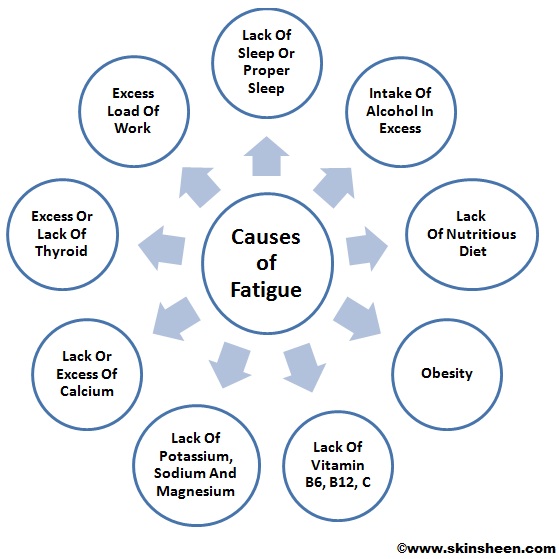
Effects
i. It slows down the rate at which work is done
ii. It makes one unfriendly or irritated
iii. Results into sluggishness or dullness.

Prevention of Fatigue
1. Avoid doing too many things at the same time.
2. Have enough rest.
3. Eat adequate and regular meals.
4. Alternate tasks that require much energy with those that require less.
5. Break big tasks into smaller ones and do them in bits.
6. Use the best method for every task.
7. Take the best posture for each task when doing it.
8. Do not overwork yourself.
9. Plan your work properly.
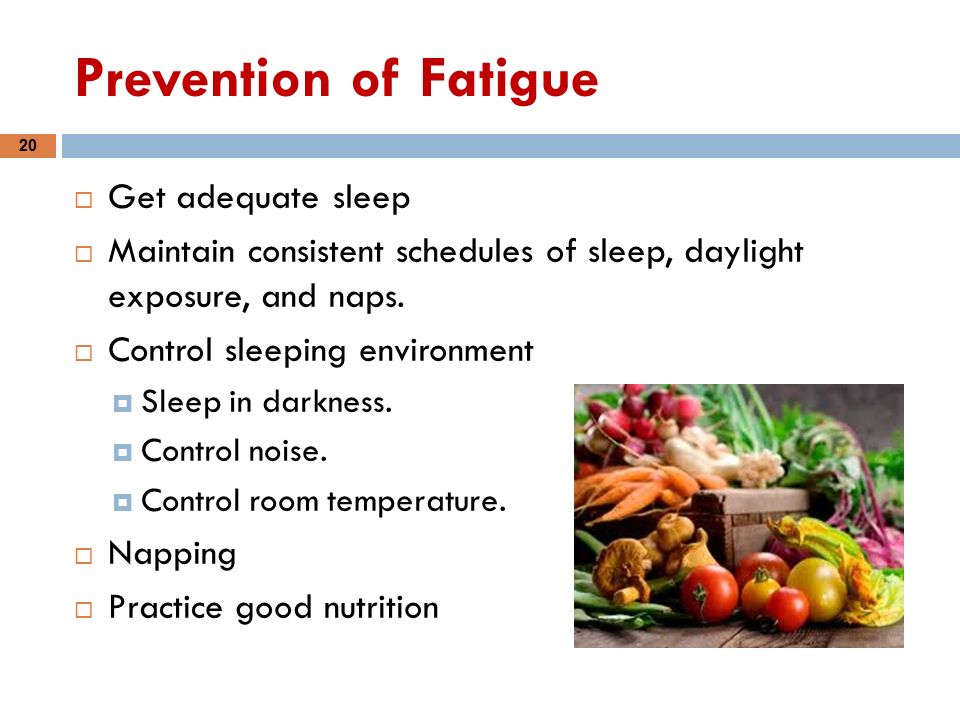
Evaluation:
1. What is fatigue?
2. Mention three effects of fatigue.
3. What should you do to prevent being fatigued?
Sub Topic 2: Meaning and importance of rest and sleep, guidelines for rest and sleep.
Rest is the act of relaxing either by sitting or lying down after a period of activity in order to refresh the body and mind. During rest, the individual is conscious of all that is happening around him/her.
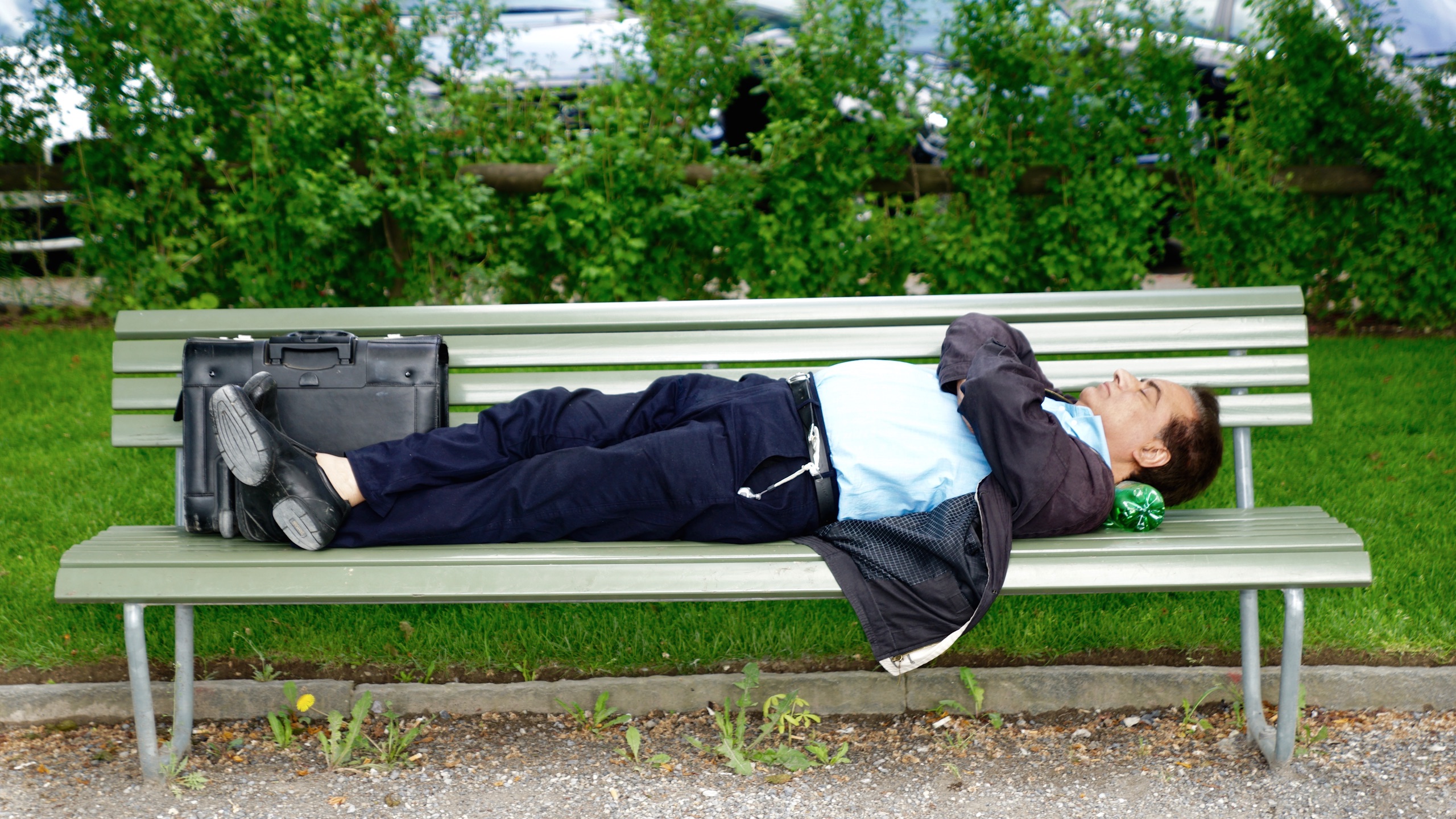
A person at rest
Sleep is a complete or deeper form of rest in which the eyes are closed and the mind and body are not active or conscious. In sleep, one is unconscious of what is going on around him/ her. Everybody needs sleep but as people get older, they need less sleep. New born babies sleep 17-18 hours a day, age’s 1-4 sleep 12 hours, age’s 4-12 sleep10 hours and 12- 16 sleep for about 8-10 hours a day.
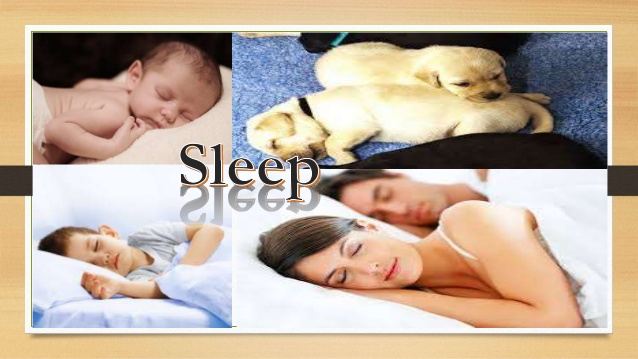
Importance of rest and sleep
1. The body relaxes
2. Energy is built up for a future use
3. Broken body tissues can be repaired and made ready for further activities
4. Muscles relax, the heart beats more slowing and breathing becomes shallow.
5. Rest is the cure for fatigue.
6. They aid quick recovery form illness.
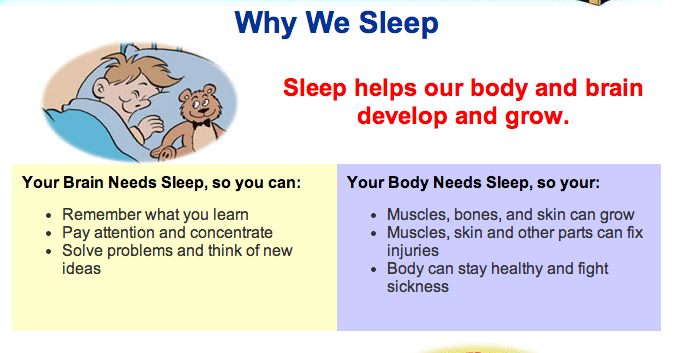
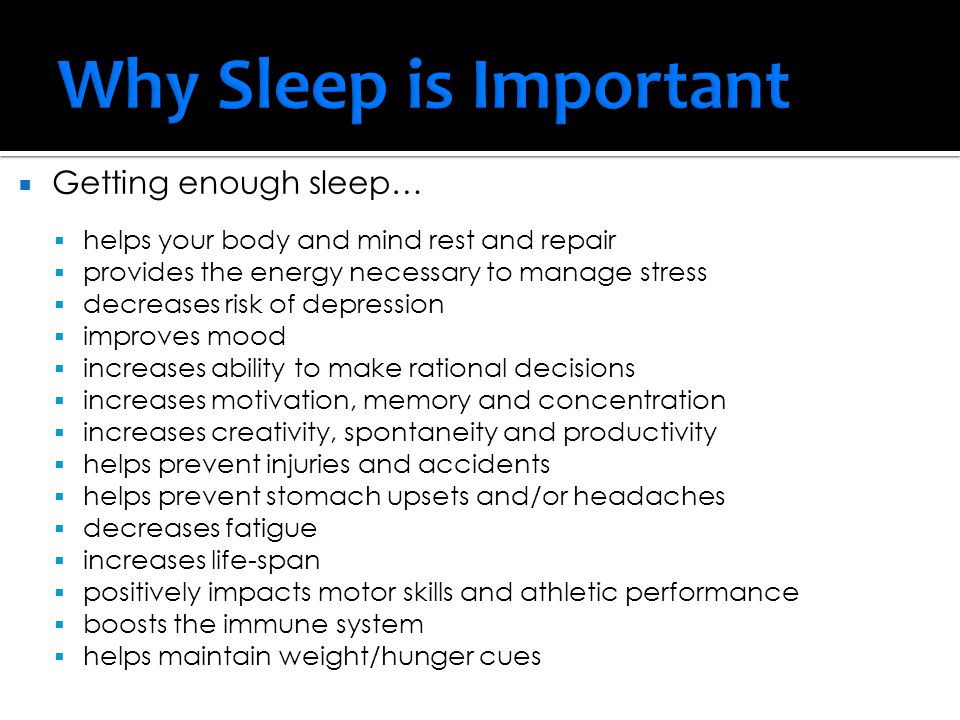
Guidelines for rest and sleep
1. Loosen all tight clothing when you are resting or sleeping
2. Rest after meals
3. Rest after strenuous activities or exercise.
4. Rest after school before playing or doing household work.
5. When lying down, do not curl up into a ball to sleep. Try to lie long or straight.
6. Go to bed early so as to wake up fresh and ready for the next day’s work.
7. Ensure that your bedroom is well-ventilated.
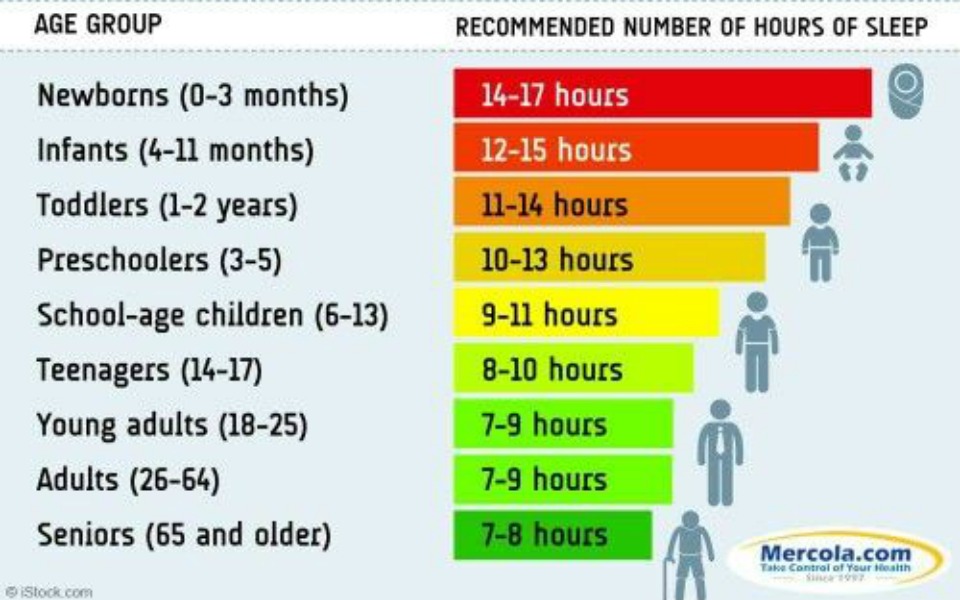
Evaluation
1. Define: rest, sleep
2. State two differences between rest and sleep
3. Enumerate five importance of rest and sleep
4. State two guidelines each for rest and sleep.
Assignment
Workbook on Home Economics New Concept for Nigeria Jnr. Sec. Schools Bk.1 (ps.21-22)
Activity
Identify your most hectic or busy day in the week. List all the activities you carried out that day. Write out the type of feelings you experience at the end of the day.
Sub Topic 1: Meaning, Causes and effects of fatigue, prevention of Fatigue
Fatigue is a feeling of extreme tiredness.

Causes of fatigue
Tiredness or fatigue can be caused by
i. Over working or too much exercise
ii. Illness
iii. Hunger or lack of food
iv. Too much exercise
v. Performing a boring or tiring task
vi. Sadness.

Effects
i. It slows down the rate at which work is done
ii. It makes one unfriendly or irritated
iii. Results into sluggishness or dullness.

Prevention of Fatigue
1. Avoid doing too many things at the same time.
2. Have enough rest.
3. Eat adequate and regular meals.
4. Alternate tasks that require much energy with those that require less.
5. Break big tasks into smaller ones and do them in bits.
6. Use the best method for every task.
7. Take the best posture for each task when doing it.
8. Do not overwork yourself.
9. Plan your work properly.

Evaluation:
1. What is fatigue?
2. Mention three effects of fatigue.
3. What should you do to prevent being fatigued?
Sub Topic 2: Meaning and importance of rest and sleep, guidelines for rest and sleep.
Rest is the act of relaxing either by sitting or lying down after a period of activity in order to refresh the body and mind. During rest, the individual is conscious of all that is happening around him/her.

A person at rest
Sleep is a complete or deeper form of rest in which the eyes are closed and the mind and body are not active or conscious. In sleep, one is unconscious of what is going on around him/ her. Everybody needs sleep but as people get older, they need less sleep. New born babies sleep 17-18 hours a day, age’s 1-4 sleep 12 hours, age’s 4-12 sleep10 hours and 12- 16 sleep for about 8-10 hours a day.

Importance of rest and sleep
1. The body relaxes
2. Energy is built up for a future use
3. Broken body tissues can be repaired and made ready for further activities
4. Muscles relax, the heart beats more slowing and breathing becomes shallow.
5. Rest is the cure for fatigue.
6. They aid quick recovery form illness.


Guidelines for rest and sleep
1. Loosen all tight clothing when you are resting or sleeping
2. Rest after meals
3. Rest after strenuous activities or exercise.
4. Rest after school before playing or doing household work.
5. When lying down, do not curl up into a ball to sleep. Try to lie long or straight.
6. Go to bed early so as to wake up fresh and ready for the next day’s work.
7. Ensure that your bedroom is well-ventilated.

Evaluation
1. Define: rest, sleep
2. State two differences between rest and sleep
3. Enumerate five importance of rest and sleep
4. State two guidelines each for rest and sleep.
Assignment
Workbook on Home Economics New Concept for Nigeria Jnr. Sec. Schools Bk.1 (ps.21-22)
Activity
Identify your most hectic or busy day in the week. List all the activities you carried out that day. Write out the type of feelings you experience at the end of the day.
Week 2
Topic: Personal clothing- (a) meaning of clothing and reasons for wearing clothes, (b) guidelines for choosing and wearing decent clothes (c) care of clothes. E.g. airing, proper storage, cleansing of shoes. (d) Washing of under- wears.
Sub-Topic 1: Meaning of clothing and reasons for wearing clothes, guidelines for choosing and wearing decent clothes
Clothing is the articles that are worn on the body to protect and beautify the body. It could be dresses, shirts, blouse, trousers, wrappers etc. other are shoes, hand bags, jewellery, make-up, and accessories.
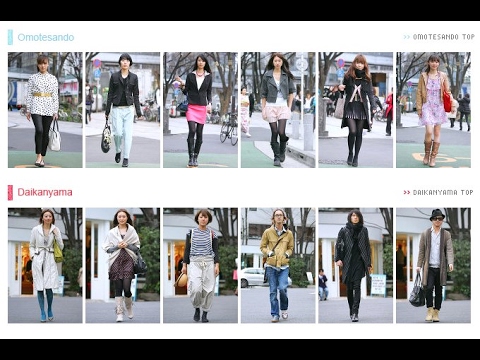
Reasons for clothing
Clothing is worn for the following reasons:
1. To protect our body: We wear clothes in order to protect the body from harmful things such as insects, plants, worms, and different weather condition such as harmattan, cold, heat, etc.
2. For modesty: We wear clothes in order to cover our nakedness and appear decent.
3. Appearance: We wear clothes to improve our appearance and to beautify our self.
4. For role identification: Clothes help to reveal our role in the society. E..g. policeman,
soldier, Nurse, student. This type of clothes is called uniform.
5. To show our status or position: Clothes are worn to show the statues or positions which
people occupy in the society, e.g. special clothes are worn by traditional rulers like ‘Emirs, Obas’ etc.
6. To show our mood: Showing how we are feeling is another reason for putting on certain
kinds of clothes. When we are in the mood of celebration we tend to dress gorgeously putting on brightly coloured clothes and when the mood is sad, like the case of mourning black clothes are worn.
7. For cultural reasons. Clothes help to show the culture of people, i.e where they come from. e.g., iro and buba is commonly worn by Yoruba women.

Guideline for choosing & wearing decent clothes
As a guide the following tips are considered important before we choose clothes to wear.
1. Available money: Clothes should be chosen based on what your purse can afford.
2. Occasion: You need to choose the right clothes for the right occasion/function e.g. Church services, party type, picnic, school, sleep or work etc.
3. Quality of fabric: You must choose clothes that will be durable.
4. Activity or work: different clothes suits different jobs, kitchen wear like Chef’s cap & apron are not meant for farm work and vice versa.
5. Choose clothes that fit well: Clothes worn should not be tightly fitted because this can disturb proper circulation of blood in the body and thereby make you ill. Make sure you choose clothes that will project your appearance in a beautiful & modest way.
6. Personal complexion: you should choose clothes that suits your skin complexion.
7. Weather condition: In cold weather, warm clothes like cardigan are advisable to wear and when the weather is hot, it is advisable to choose cotton fabrics in hot weather.
8. Wash ability of fabric: choose clothes that are easily washable.
9. Peer pressure: do not choose indecent clothes in order to confirm or please four peers.

Evaluation
1. What are clothes?
2. List and explain six reasons for wearing clothes
3. Identify five guide lines for choosing and wearing decent clothes.
Sub-Topic 1: Meaning of clothing and reasons for wearing clothes, guidelines for choosing and wearing decent clothes
Clothing is the articles that are worn on the body to protect and beautify the body. It could be dresses, shirts, blouse, trousers, wrappers etc. other are shoes, hand bags, jewellery, make-up, and accessories.

Reasons for clothing
Clothing is worn for the following reasons:
1. To protect our body: We wear clothes in order to protect the body from harmful things such as insects, plants, worms, and different weather condition such as harmattan, cold, heat, etc.
2. For modesty: We wear clothes in order to cover our nakedness and appear decent.
3. Appearance: We wear clothes to improve our appearance and to beautify our self.
4. For role identification: Clothes help to reveal our role in the society. E..g. policeman,
soldier, Nurse, student. This type of clothes is called uniform.
5. To show our status or position: Clothes are worn to show the statues or positions which
people occupy in the society, e.g. special clothes are worn by traditional rulers like ‘Emirs, Obas’ etc.
6. To show our mood: Showing how we are feeling is another reason for putting on certain
kinds of clothes. When we are in the mood of celebration we tend to dress gorgeously putting on brightly coloured clothes and when the mood is sad, like the case of mourning black clothes are worn.
7. For cultural reasons. Clothes help to show the culture of people, i.e where they come from. e.g., iro and buba is commonly worn by Yoruba women.

Guideline for choosing & wearing decent clothes
As a guide the following tips are considered important before we choose clothes to wear.
1. Available money: Clothes should be chosen based on what your purse can afford.
2. Occasion: You need to choose the right clothes for the right occasion/function e.g. Church services, party type, picnic, school, sleep or work etc.
3. Quality of fabric: You must choose clothes that will be durable.
4. Activity or work: different clothes suits different jobs, kitchen wear like Chef’s cap & apron are not meant for farm work and vice versa.
5. Choose clothes that fit well: Clothes worn should not be tightly fitted because this can disturb proper circulation of blood in the body and thereby make you ill. Make sure you choose clothes that will project your appearance in a beautiful & modest way.
6. Personal complexion: you should choose clothes that suits your skin complexion.
7. Weather condition: In cold weather, warm clothes like cardigan are advisable to wear and when the weather is hot, it is advisable to choose cotton fabrics in hot weather.
8. Wash ability of fabric: choose clothes that are easily washable.
9. Peer pressure: do not choose indecent clothes in order to confirm or please four peers.

Evaluation
1. What are clothes?
2. List and explain six reasons for wearing clothes
3. Identify five guide lines for choosing and wearing decent clothes.
Week 3
Sub-Topic 2: Care of clothes.
E.g. airing, proper storage, cleansing of shoes, Washing of under- wears.
We need to care for our clothes because of these reasons:
a. Dirty clothes are easily infested with disease germs or bacteria
b. These germs and bacteria can be transferred on the skin causing skin infections like rashes, ring worm scabies etc.
c. Dirty clothes produce offensive smell.
d. when clothes are properly cared for, you look beautiful and confident.
Care of clothes
You can care for your clothes in the following ways:
1. Mend your clothes as soon as they are torn.
2. Air your clothes before storing them to remove dampness on clothes.
3. Do not store dirty or damp clothes.
4. Wash your clothes as soon as they are dirty and make sure you follow the instructions on the care labels.
5. Do not repeat underwear’s especially pants. Always wash the used one every day.

Proper storage of clothes
1. Store only clean clothes
2. Proper storage space or container should be used for personal clothes e.g. box, drawer, wardrobe/closet, wall hanger etc.
3. Iron and air clothes before storage
4. Do not overcrowd your clothes closet or wardrobe
5. Keep your storage place clean.
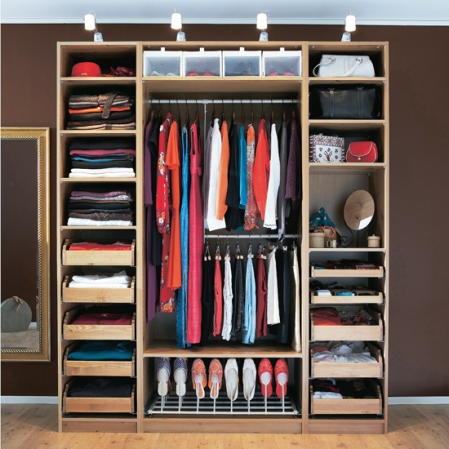
Care of shoes
i. Remove shoe lace if available.
ii. Remove dust, dirt, mud from shoes using damp clean cloth.
iii. Before wearing them again, clean with a dry clean cloth.
iv. If your shoes are wet, allow them to dry slowly away from heat, in a warm, airy place.
v. Shoes that require polishing should be polished with good and correct colour of polish.
vi. Avoid storing dirty and smelling shoes without treatment
vii. To keep shoes in good shape when not in use, stuff it with clean old newspaper or shoe trees.

Washing of under-wears
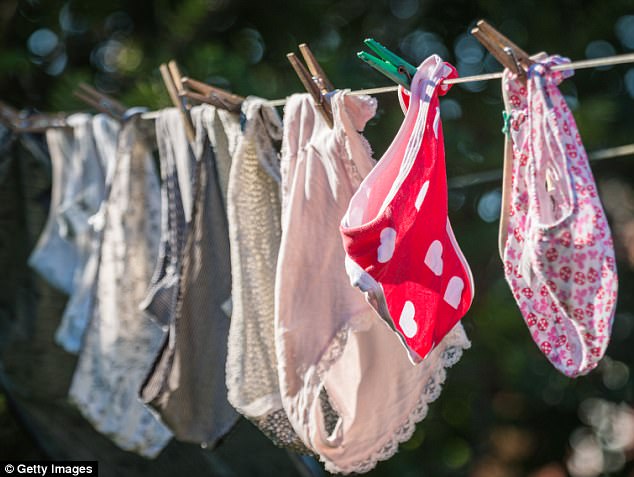
Laundry work is the process of washing clothes and finishing e.g. starching and ironing.
Laundry equipment
Simple equipments like plastic or aluminium buckets, pegs tongs lines, iron, ironing boards etc. and machines are used for washing clothes.

Washing agents
Washing agents are the materials we use in washing our clothes. These materials include: detergents, soaps, water, stain removers e.g. bleach, stiffening agents e.g. starch, whitening agent e.g. laundry blue, disinfectant e.g. Dettol etc.
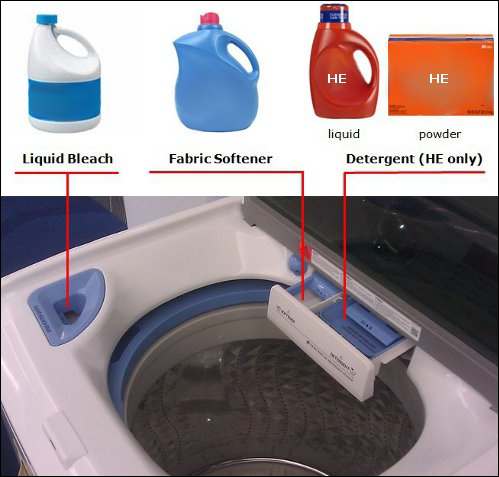
Types of soap
i. Laundry soap- available in bars and cakes
ii. Soap flakes – available in thin flakes cut from pure soap
iii. Soap powder – it is in powered form. Most kinds contain whitening or bleaching agents.
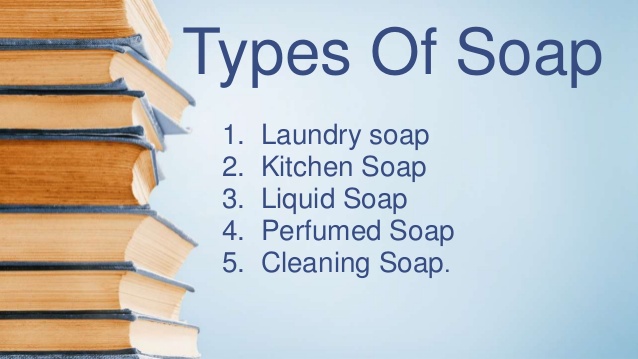
Those with a strong bleaching effect are not suitable for fine material and wool.
These can be obtained in liquid or powered form. They are made from petroleum products. They dissolve more readily than soap in water. Soap only lather in soft water but synthetic detergents lather equally well in soft water, hard water and sea water, and do not form scum in hard water.
Steps in laundry work
Steps in washing clothes include:
1. Sorting the articles to be laundered, according to colour, type of fabric, etc.
2. Mending torn articles
3. Removing stains
4. Soaking colour-fast article
5. Washing
6. Boiling: this can only be done for face towels, pillow cases, bed sheets. Boiling helps to
remove any remaining dirt and kill germs.
(a) Half fill an enamel basin big enough to hold the washing and specially reserved for
this purpose.
(b) Place in it, the clothes which have been washed, rinsed and squeezed dry. Bring
water to boil for 10-20 minutes.
(c) Stair carefully as you are boiling it
(d) Remove the basin from heat, drain off water. Never boil colored cottons.
7. Rinsing
8. Blueing and starching
9. Hanging and drying
10. Finishing/ironing
11. Airing
12. Storing of finished articles

Evaluation
1. Give four reasons why we should care for our clothes.
2. Mention three ways we should care for our clothes.
3. Define laundry
4. Mention any five simple laundry equipment and machine
5. What are washing agents?
Assignment
Workbook on Home Economics New Concept for Nigeria Jnr. Sec. Schools Bk.1 (ps.23-25)
Activity
Make clothing album with different types of clothes worn by people from various parts of this country.
E.g. airing, proper storage, cleansing of shoes, Washing of under- wears.
We need to care for our clothes because of these reasons:
a. Dirty clothes are easily infested with disease germs or bacteria
b. These germs and bacteria can be transferred on the skin causing skin infections like rashes, ring worm scabies etc.
c. Dirty clothes produce offensive smell.
d. when clothes are properly cared for, you look beautiful and confident.
Care of clothes
You can care for your clothes in the following ways:
1. Mend your clothes as soon as they are torn.
2. Air your clothes before storing them to remove dampness on clothes.
3. Do not store dirty or damp clothes.
4. Wash your clothes as soon as they are dirty and make sure you follow the instructions on the care labels.
5. Do not repeat underwear’s especially pants. Always wash the used one every day.

Proper storage of clothes
1. Store only clean clothes
2. Proper storage space or container should be used for personal clothes e.g. box, drawer, wardrobe/closet, wall hanger etc.
3. Iron and air clothes before storage
4. Do not overcrowd your clothes closet or wardrobe
5. Keep your storage place clean.

Care of shoes
i. Remove shoe lace if available.
ii. Remove dust, dirt, mud from shoes using damp clean cloth.
iii. Before wearing them again, clean with a dry clean cloth.
iv. If your shoes are wet, allow them to dry slowly away from heat, in a warm, airy place.
v. Shoes that require polishing should be polished with good and correct colour of polish.
vi. Avoid storing dirty and smelling shoes without treatment
vii. To keep shoes in good shape when not in use, stuff it with clean old newspaper or shoe trees.

Washing of under-wears

Laundry work is the process of washing clothes and finishing e.g. starching and ironing.
Laundry equipment
Simple equipments like plastic or aluminium buckets, pegs tongs lines, iron, ironing boards etc. and machines are used for washing clothes.

Washing agents
Washing agents are the materials we use in washing our clothes. These materials include: detergents, soaps, water, stain removers e.g. bleach, stiffening agents e.g. starch, whitening agent e.g. laundry blue, disinfectant e.g. Dettol etc.

Types of soap
i. Laundry soap- available in bars and cakes
ii. Soap flakes – available in thin flakes cut from pure soap
iii. Soap powder – it is in powered form. Most kinds contain whitening or bleaching agents.

Those with a strong bleaching effect are not suitable for fine material and wool.
These can be obtained in liquid or powered form. They are made from petroleum products. They dissolve more readily than soap in water. Soap only lather in soft water but synthetic detergents lather equally well in soft water, hard water and sea water, and do not form scum in hard water.
Steps in laundry work
Steps in washing clothes include:
1. Sorting the articles to be laundered, according to colour, type of fabric, etc.
2. Mending torn articles
3. Removing stains
4. Soaking colour-fast article
5. Washing
6. Boiling: this can only be done for face towels, pillow cases, bed sheets. Boiling helps to
remove any remaining dirt and kill germs.
(a) Half fill an enamel basin big enough to hold the washing and specially reserved for
this purpose.
(b) Place in it, the clothes which have been washed, rinsed and squeezed dry. Bring
water to boil for 10-20 minutes.
(c) Stair carefully as you are boiling it
(d) Remove the basin from heat, drain off water. Never boil colored cottons.
7. Rinsing
8. Blueing and starching
9. Hanging and drying
10. Finishing/ironing
11. Airing
12. Storing of finished articles

Evaluation
1. Give four reasons why we should care for our clothes.
2. Mention three ways we should care for our clothes.
3. Define laundry
4. Mention any five simple laundry equipment and machine
5. What are washing agents?
Assignment
Workbook on Home Economics New Concept for Nigeria Jnr. Sec. Schools Bk.1 (ps.23-25)
Activity
Make clothing album with different types of clothes worn by people from various parts of this country.
Week 4
TOPIC: Use of cosmetics and deodorants- (a) importance of cosmetics,(b) points to consider in choice and use of cosmetics and deodorants,(c) procedures for applying cosmetics and deodorants, (d) indigenous cosmetics.
Sub-Topic 1: Importance of cosmetics, points to consider in choice and use of cosmetics and deodorants.
Cosmetics are substances which we apply on our faces, hair or bodies to look more attractive e.g. body creams and oils, nails vanishes etc. we can also call them make-ups.
Deodorants are substances that are put on the skin to prevent the body from having an unpleasant smell. Examples are roll-on, spay, sticks, perfume etc.

Anti-perspiration:
These are special products or astringents that reduce the amount of perspiration a person secretes for several hours. Products that contain antiperspirant and deodorant combined together are called anti-perspirant deodorants.

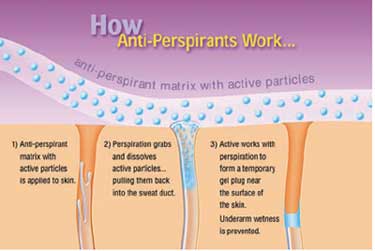
Importance of cosmetics
i. They project your natural beauty and make you attractive
ii. To protect the skin
iii. To hide a person’s poor feature
iv. To emphasize your best skin, facial and hair features
v. some are used as treatment for skin problems such as pimples, rashes etc.

NB- Young people do not need much cosmetics as they are in their youthful stage of life with natural beauty and complexion.
Points to consider in choosing cosmetics and deodorants
The following are points you need to consider before choosing any cosmetics or deodorant to use:-
1. Know the one that suits your complexion
2. Avoid heavy make-up
3. Avoid cosmetics that bleaches
4. Use cosmetics with reasonable and affordable cost
5. Discontinue use if the skin reacts to any cosmetics, deodorant or antiperspirant.
6. Apply cosmetics and deodorants according to manufacturer’s instructions.
7. Never go to bed with make-up on your face
8. Use the deodorant that can control your skin
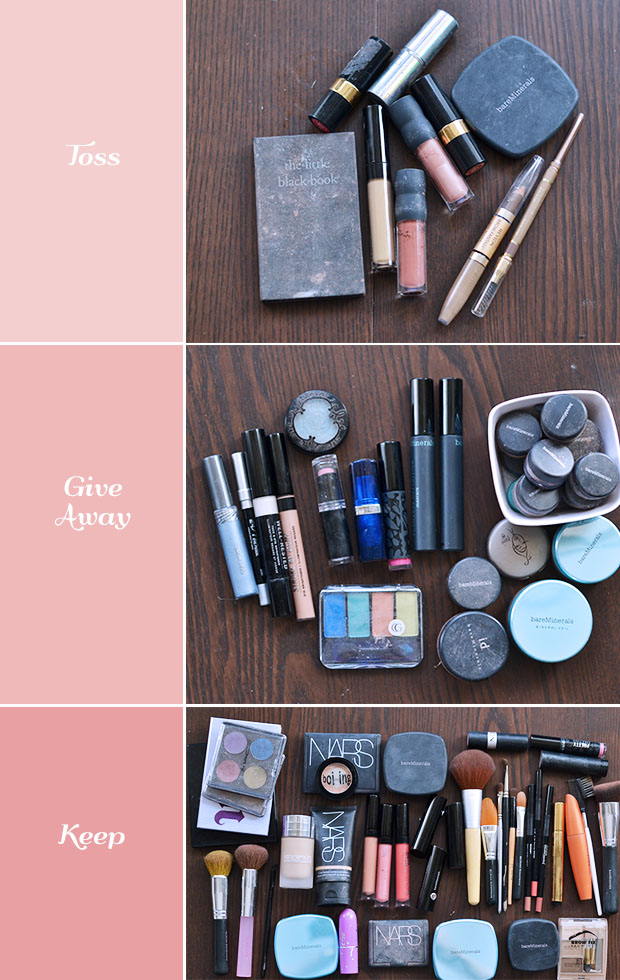
Evaluation
1. What are cosmetic?
2. Define deodorant
3. State 5 importance of cosmetics
4. List 5 examples of cosmetics and deodorants
5. What 5 factors should you consider in your choice of cosmetics and deodorant?
Sub-Topic 2: Procedures for applying cosmetics and deodorants, indigenous cosmetics.
Cosmetics are applied step by step. The step include the following:
1. Cleansing: clean the face and neck thoroughly with water and mild toilet soap. A suitable cleansing lotion can be used.
2. Toning: after cleansing, tone the skin by applying a suitable toning lotion/cream. The skin can be toned by splashing cold water on the face. Toning makes the skin of the face firm by closing up the pores.
3. Moisturizing: apply moisturizing cream/lotion all over the face and neck. This helps to:
(a) Keep the skin fresh
(b) Prevent dryness
(c) Blend make-up more smoothly onto the skin.
4. Application of foundation cream: this helps the face powder to stay on well on the face.
5. Application of face powder: this can be done by using upward strokes from the chin to the hair line.
6. Application of other make-ups such as lipsticks, eye pencils and liners, eye shadow, perfume, etc.

Indigenous (local) cosmetics
These are naturally occurring local cosmetics. Some of them were used in the past to improve appearance. Some are still in use today. They include:
1. Eye make-up “tiro” (Yoruba) or “tanjere” (igbo): this can be ground into powder. It is applied as eyeliner using a special thin stick reserved for the purpose.

2. Cam wood powder “uhe” (igbo) or “oshun” (Yoruba): this is a red wood which can be thoroughly ground into a fine powder. It can also be made into a paste by mixing the powder with little water and palm oil. It can be used on the face or entire body. It is said to have a smoothing effect on the skin.

3. Body paint “uri or uli” (igbo): this is a special body paint made from the bark, seeds or roots of certain trees. It also has some medicinal effects.
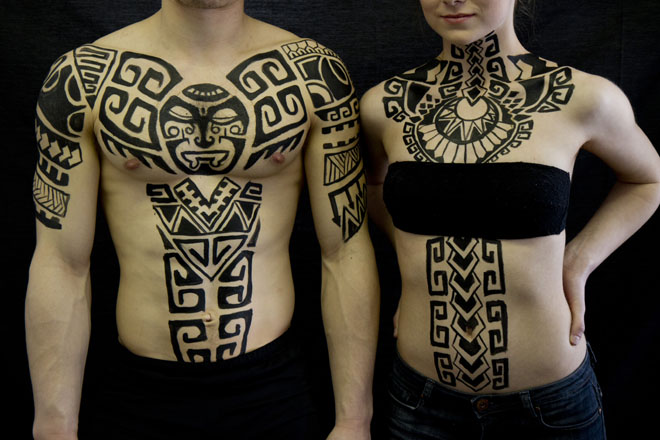
4. “lali or lalle” :this is a special make-up from leaves of a special tree. The leaves are ground into paste and mixed with lemon or lime juice. It is commonly used by ladies in the Northern parts of Nigeria to paint their finger and toe nails as the outline of the hands and feet.

5. “Nzu” (igbo) or “Efun” (Yoruba): This is a local chalk. It can be ground into powder and applied on the face and body.
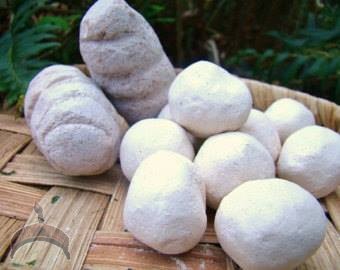
6. “Edo or odo” (igbo): This is a yellow substance. It can be made into a paste and applied on the skin. It is said to have smoothing effect on the skin.
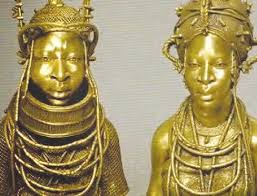
Evaluation
1. Cosmetics and deodorants can be ………….or ………………
2. Examples of modern cosmetics include
3. Example of indigenous include
4. Why are cosmetics not necessary for young people?
5. What is anti-perspiration deodorant?
Assignment
Workbook on Home Economics New Concept for Nigeria Jnr. Sec. Schools Bk.1 (pgs.26-27)
Sub-Topic 1: Importance of cosmetics, points to consider in choice and use of cosmetics and deodorants.
Cosmetics are substances which we apply on our faces, hair or bodies to look more attractive e.g. body creams and oils, nails vanishes etc. we can also call them make-ups.
Deodorants are substances that are put on the skin to prevent the body from having an unpleasant smell. Examples are roll-on, spay, sticks, perfume etc.

Anti-perspiration:
These are special products or astringents that reduce the amount of perspiration a person secretes for several hours. Products that contain antiperspirant and deodorant combined together are called anti-perspirant deodorants.


Importance of cosmetics
i. They project your natural beauty and make you attractive
ii. To protect the skin
iii. To hide a person’s poor feature
iv. To emphasize your best skin, facial and hair features
v. some are used as treatment for skin problems such as pimples, rashes etc.

NB- Young people do not need much cosmetics as they are in their youthful stage of life with natural beauty and complexion.
Points to consider in choosing cosmetics and deodorants
The following are points you need to consider before choosing any cosmetics or deodorant to use:-
1. Know the one that suits your complexion
2. Avoid heavy make-up
3. Avoid cosmetics that bleaches
4. Use cosmetics with reasonable and affordable cost
5. Discontinue use if the skin reacts to any cosmetics, deodorant or antiperspirant.
6. Apply cosmetics and deodorants according to manufacturer’s instructions.
7. Never go to bed with make-up on your face
8. Use the deodorant that can control your skin

Evaluation
1. What are cosmetic?
2. Define deodorant
3. State 5 importance of cosmetics
4. List 5 examples of cosmetics and deodorants
5. What 5 factors should you consider in your choice of cosmetics and deodorant?
Sub-Topic 2: Procedures for applying cosmetics and deodorants, indigenous cosmetics.
Cosmetics are applied step by step. The step include the following:
1. Cleansing: clean the face and neck thoroughly with water and mild toilet soap. A suitable cleansing lotion can be used.
2. Toning: after cleansing, tone the skin by applying a suitable toning lotion/cream. The skin can be toned by splashing cold water on the face. Toning makes the skin of the face firm by closing up the pores.
3. Moisturizing: apply moisturizing cream/lotion all over the face and neck. This helps to:
(a) Keep the skin fresh
(b) Prevent dryness
(c) Blend make-up more smoothly onto the skin.
4. Application of foundation cream: this helps the face powder to stay on well on the face.
5. Application of face powder: this can be done by using upward strokes from the chin to the hair line.
6. Application of other make-ups such as lipsticks, eye pencils and liners, eye shadow, perfume, etc.

Indigenous (local) cosmetics
These are naturally occurring local cosmetics. Some of them were used in the past to improve appearance. Some are still in use today. They include:
1. Eye make-up “tiro” (Yoruba) or “tanjere” (igbo): this can be ground into powder. It is applied as eyeliner using a special thin stick reserved for the purpose.

2. Cam wood powder “uhe” (igbo) or “oshun” (Yoruba): this is a red wood which can be thoroughly ground into a fine powder. It can also be made into a paste by mixing the powder with little water and palm oil. It can be used on the face or entire body. It is said to have a smoothing effect on the skin.

3. Body paint “uri or uli” (igbo): this is a special body paint made from the bark, seeds or roots of certain trees. It also has some medicinal effects.

4. “lali or lalle” :this is a special make-up from leaves of a special tree. The leaves are ground into paste and mixed with lemon or lime juice. It is commonly used by ladies in the Northern parts of Nigeria to paint their finger and toe nails as the outline of the hands and feet.

5. “Nzu” (igbo) or “Efun” (Yoruba): This is a local chalk. It can be ground into powder and applied on the face and body.

6. “Edo or odo” (igbo): This is a yellow substance. It can be made into a paste and applied on the skin. It is said to have smoothing effect on the skin.

Evaluation
1. Cosmetics and deodorants can be ………….or ………………
2. Examples of modern cosmetics include
3. Example of indigenous include
4. Why are cosmetics not necessary for young people?
5. What is anti-perspiration deodorant?
Assignment
Workbook on Home Economics New Concept for Nigeria Jnr. Sec. Schools Bk.1 (pgs.26-27)
Week 5
TOPIC: Healthy feeding habits: Meaning and functions of food, good feeding habits and table manners
Sub-Topic1: Meaning and functions of food
Food is any substance liquid or solid which when taken in and digested provides the body with nourishment, energy, enhances growth and regulates the body processes.
Nutrients are simple chemical substances present in small or large amount in our food. We have six classes of food nutrient performing their specific functions.
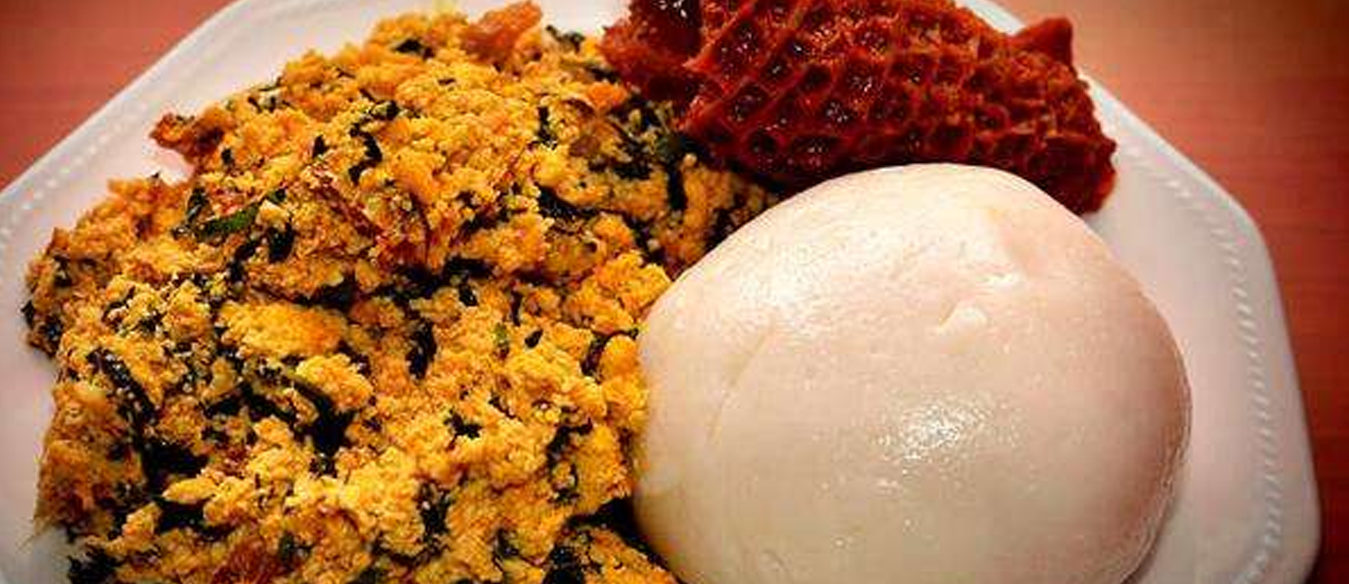
Nutrition is the scientific study of the food we eat and how it nourishes our body.
Functions of food
Food performs the following functions:
1. It provide the body with heat and energy
2. It helps in the growth and repair of body tissues
3. food is necessary for good health and vitality
4. It protects the body from diseases
5. Roughages in food helps bowel movement and prevents constipation
6. For proper bone and teeth formation e.g. iron calcium , iodine in foods
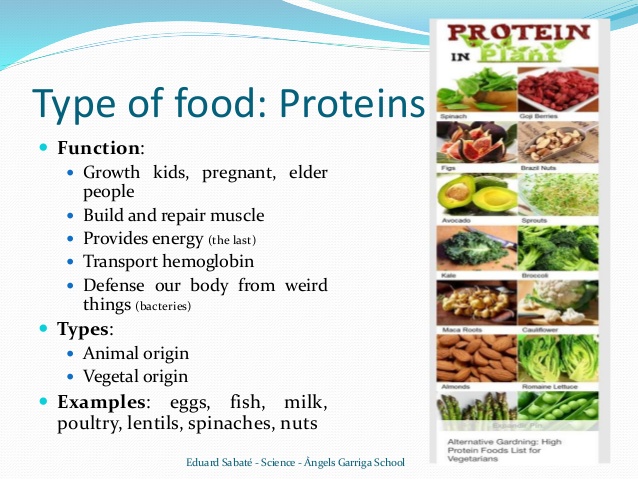
Food Groups
Foods can be grouped according to the nutrients they contain and the functions they perform in the body. Foods are therefore grouped into the following classes:
1. Body building foods (proteins) this group include meat, fish, milk, beans, egg etc.
2. Energy food (mainly carbohydrates and fats). Examples are Yam, cassava, potatoes, bread, maize, Palm oil etc.
3. Protective foods: (Vitamins and Minerals) these helps us to protect the body from diseases. Examples are fruits and vegetables.
4.Roughages – They help to increase the bulk of food, aid digestion and bowel movements thereby preventing constipation.

Foods that supply roughage
Among the protective nutrients we have those referred to as ‘micro nutrients’. They are essential for good health and for proper functioning of the body processes. Examples are vitamin A Iodine and Iron.

Evaluation
1. What is food, nutrient, and nutrition?
2. State 5 functions of food.
3. With examples, classify foods according to their group.
Sub-Topic 2: Good feeding habits and table manners
Feeding habit means every day pattern of eating. It involves the tendency to reach out for the same foods whenever you are hungry. Some feeding habits are developed when you are young. Other habits develop from factors in your current life style.
A healthy feeding habit results from choosing nutritious food in a conscious way while unhealthy feeding habit results from making poor food choices over a period of time.
Importance of Healthy feeding Habit
Healthy feeding habit will help you to achieve the following:
1. Look and feel better
2. Have a body that is better equipped to heal fast and properly when, attacked by diseases than a poorly nourished one.
3. Have more energy.
4. Prevent you from getting some diseases later in life.

Healthy feeding habit and Table manners include:
1. Eat a variety of foods. Eat food from all the food groups
2. Balance the food with physical activity.
3. Always eat 3 balanced meals daily
4. Choose nutritious food in a conscious way
5. Choose diet that contains sugar, salt and sodium moderately
6. Sit upright at the dining table when eating
7. Always wash your hands before and after meals
8. Do not hurry over meals
9. chew your food properly
10. Do not talk with food in your mouth
11. Never use the knife to put food into your mouth
12. Avoid picking your teeth with your finger nails, rather, use tooth pick
13. Do not stretch your hand over someone’s food in order to reach for salt, water etc.
Evaluation
1. Define: (a) healthy feeding habit (b) unhealthy feeding habit
2. Mention four importance of healthy feeding habit
3. Enumerate ten good feeding habit and table manners.
Assignment
Workbook on Home Economics New Concept for Nigeria Jnr. Sec. Schools Bk.1 (ps.28-29).
Activity
List five dishes that are generally eaten in your home. what nutrients are present in each?
Sub-Topic1: Meaning and functions of food
Food is any substance liquid or solid which when taken in and digested provides the body with nourishment, energy, enhances growth and regulates the body processes.
Nutrients are simple chemical substances present in small or large amount in our food. We have six classes of food nutrient performing their specific functions.

Nutrition is the scientific study of the food we eat and how it nourishes our body.
Functions of food
Food performs the following functions:
1. It provide the body with heat and energy
2. It helps in the growth and repair of body tissues
3. food is necessary for good health and vitality
4. It protects the body from diseases
5. Roughages in food helps bowel movement and prevents constipation
6. For proper bone and teeth formation e.g. iron calcium , iodine in foods

Food Groups
Foods can be grouped according to the nutrients they contain and the functions they perform in the body. Foods are therefore grouped into the following classes:
1. Body building foods (proteins) this group include meat, fish, milk, beans, egg etc.
2. Energy food (mainly carbohydrates and fats). Examples are Yam, cassava, potatoes, bread, maize, Palm oil etc.
3. Protective foods: (Vitamins and Minerals) these helps us to protect the body from diseases. Examples are fruits and vegetables.
4.Roughages – They help to increase the bulk of food, aid digestion and bowel movements thereby preventing constipation.

Foods that supply roughage
Among the protective nutrients we have those referred to as ‘micro nutrients’. They are essential for good health and for proper functioning of the body processes. Examples are vitamin A Iodine and Iron.

Evaluation
1. What is food, nutrient, and nutrition?
2. State 5 functions of food.
3. With examples, classify foods according to their group.
Sub-Topic 2: Good feeding habits and table manners
Feeding habit means every day pattern of eating. It involves the tendency to reach out for the same foods whenever you are hungry. Some feeding habits are developed when you are young. Other habits develop from factors in your current life style.
A healthy feeding habit results from choosing nutritious food in a conscious way while unhealthy feeding habit results from making poor food choices over a period of time.
Importance of Healthy feeding Habit
Healthy feeding habit will help you to achieve the following:
1. Look and feel better
2. Have a body that is better equipped to heal fast and properly when, attacked by diseases than a poorly nourished one.
3. Have more energy.
4. Prevent you from getting some diseases later in life.

Healthy feeding habit and Table manners include:
1. Eat a variety of foods. Eat food from all the food groups
2. Balance the food with physical activity.
3. Always eat 3 balanced meals daily
4. Choose nutritious food in a conscious way
5. Choose diet that contains sugar, salt and sodium moderately
6. Sit upright at the dining table when eating
7. Always wash your hands before and after meals
8. Do not hurry over meals
9. chew your food properly
10. Do not talk with food in your mouth
11. Never use the knife to put food into your mouth
12. Avoid picking your teeth with your finger nails, rather, use tooth pick
13. Do not stretch your hand over someone’s food in order to reach for salt, water etc.
Evaluation
1. Define: (a) healthy feeding habit (b) unhealthy feeding habit
2. Mention four importance of healthy feeding habit
3. Enumerate ten good feeding habit and table manners.
Assignment
Workbook on Home Economics New Concept for Nigeria Jnr. Sec. Schools Bk.1 (ps.28-29).
Activity
List five dishes that are generally eaten in your home. what nutrients are present in each?
Week 6
Topic: The family: meaning, types and functions of the family, roles of each family member and the family as a whole, relationships- the family tree, Family values.
Sub-Topic 1: Meaning, types and functions of the family, roles of each family member and the family as a whole.
A family can be defined as a group of persons who live together and are united by ties of marriage, blood or adoption. Family members are each other’s kin.
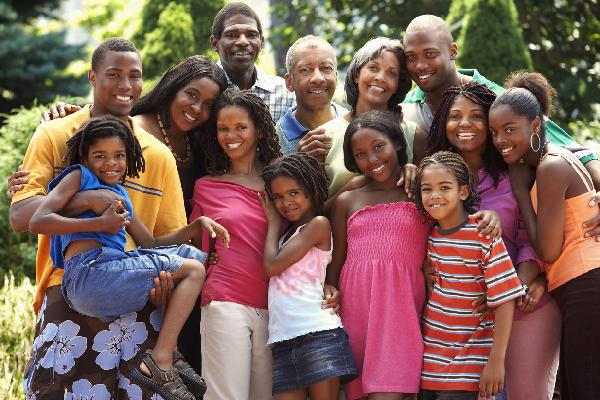
The family is the basic unit of any society. It is very essential to the nation as the nation consist of individuals from different families. Socialization also begins from the family.
Types of family
1. Nuclear family or monogamous family- This type of family is made up of the man, his wife and their children.
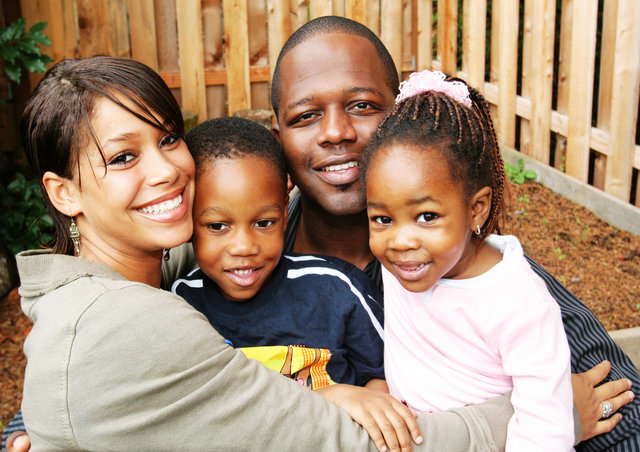
2. Polygamous family – This type of family is made of the man, his wives and their children.
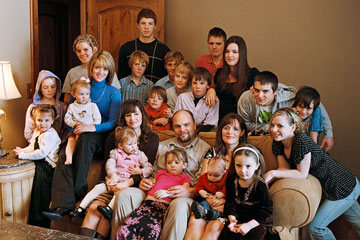
3. The extended family. This type consists of the father, the mother (mothers), the children and other relatives like uncles, aunts, nephew, grandparents etc. The oldest member becomes the head of the extended family. This type of family is common in Nigeria.

Roles/Functions of the Family
1. Procreation or child bearing
2. Manifest love to its members
3. Provision of food, shelter and clothing for its members
4. Transmits culture and norms from its members to the society
5. Socialization of its members
6. Companionship: family members share experiences.
7. Personal security and acceptance: people feel more protected within their families than outside.
Roles of each family member and the family as a whole
Each family member has a specific function to perform. These roles include:
Roles of the father:
1. Provides basic needs such as money for food, clothing, shelter, education, medical treatment etc.
2. Maintains discipline in the home
3. Shows love and maintain peace
4. A role model in the family
5. The head of the home
6. Protects family members
7. Teaches his children the culture of the society.
8. Breadwinner of the family.
9. Performs his civic right and responsibilities such as paying of tax, obeying the law of the society.
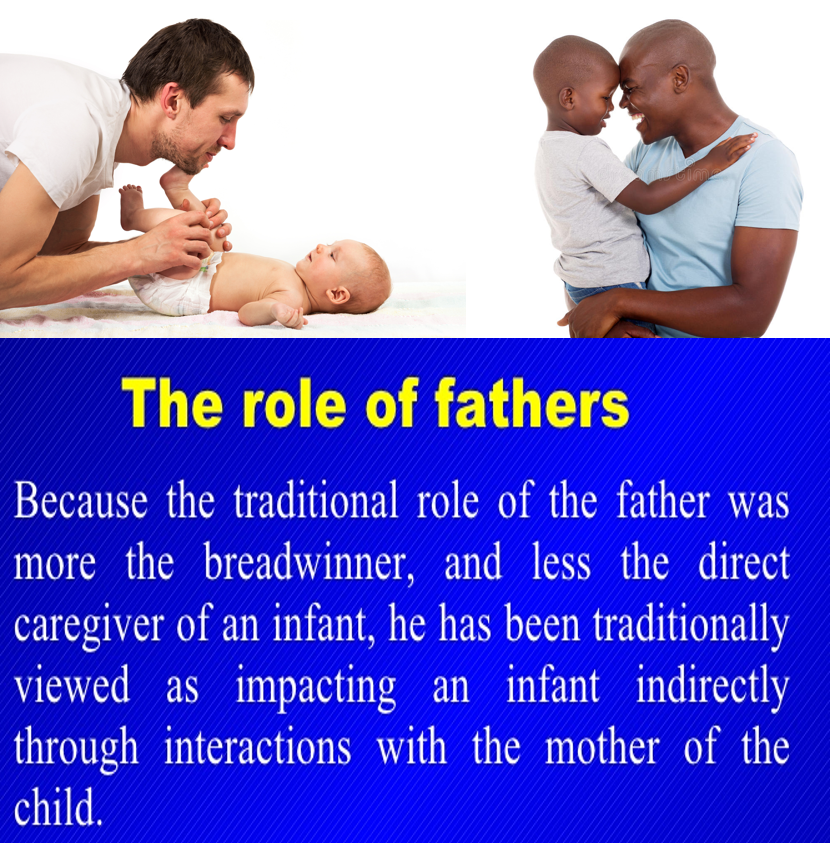
Roles of the Mother:
1. Prepares food for the member
2. cares for the home
3. Bears and nurture children
4. Shows love to her husband and children
5. helps in buying and maintaining family clothing
6. Teaches the children home making skill and other functional skills
7. She is the home maker in the family
8. She acts as a model for her daughters
9. She takes care of the simple in of the family.
10. She performs her civic right and responsibilities.

Roles of the Children:
1. Respect and obey their parents and other adults in the society.
2. Help in carrying out domestic chores and errands in the home e.g. cleaning the house, washing plates, caring for younger ones, fetching water.
3. Learn the culture of the society.
4. Give unity and stability to the home
5. Bears the family’s name
6. Perform their civic rights and responsibilities.

Evaluation
1. Give 2 definitions of family
2. Mention 5 functions of the family
3. State 3 types of family and explain each of them
4. Identify each role of the family member.
Sub-Topic 2: Relationships- the family tree, Family values.
Family relationship or kinship pattern is the link or connection between one family member and the other. There are certain terms that are used to describe these connections. They include the following:
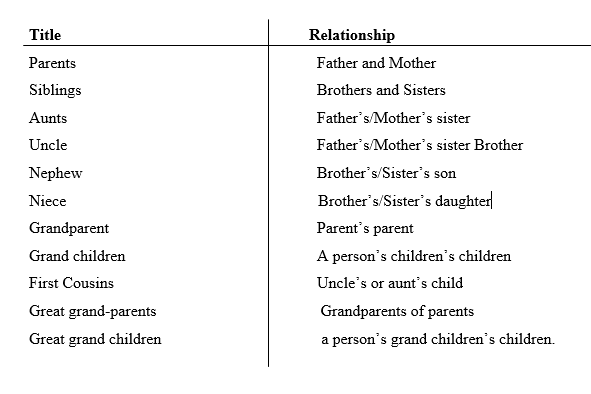
Family Tree
A family tree is a graph or diagram that shows the kinship pattern of a family. It shows how the family members relate to each other.
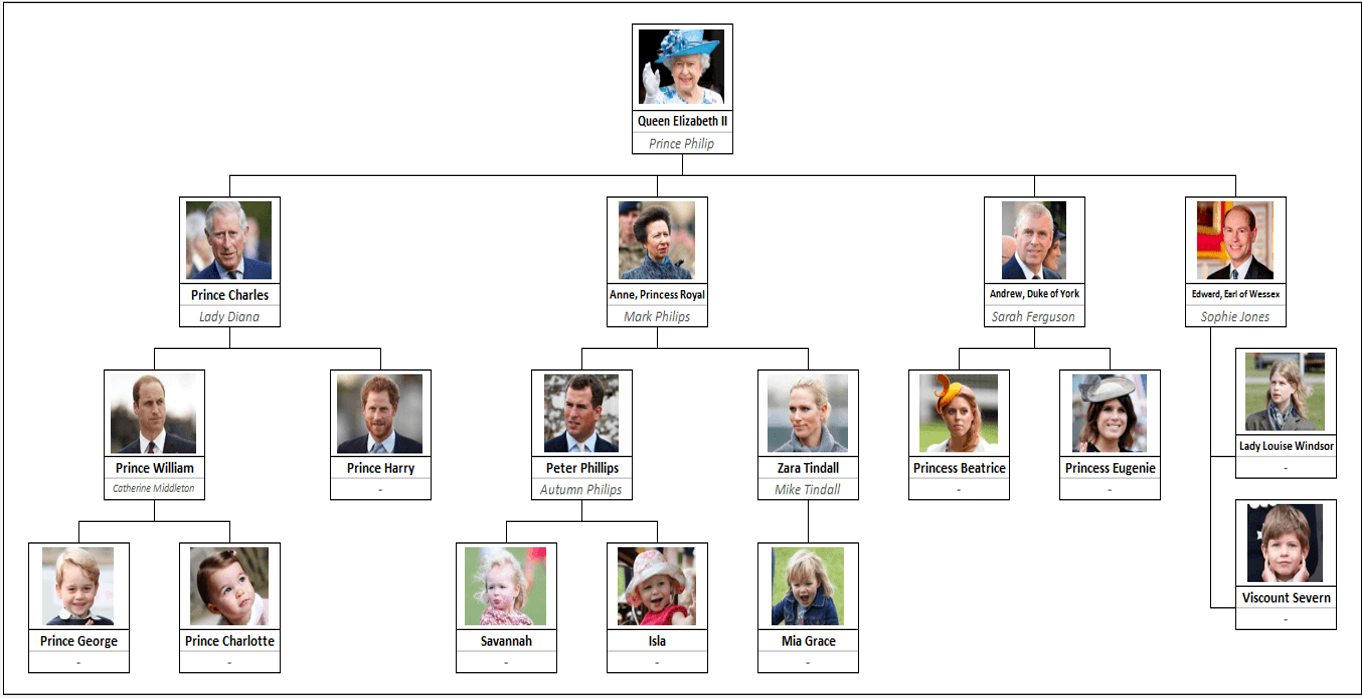
Family tree
Family values
Value means the worth of an item
Values are beliefs, feelings and idea about what is important. They are based on ideas about what is right, good and desirable. Values cannot be seen, they are only reflected in our actions. They can be positive or negative. Examples of positive values are: freedom, courtesy, good health, orderliness, friendship, leisure, love, patience, respect, tolerance, compassion, fairness, trust, honesty, etc. Examples of negative values are: dishonesty, envy, falsehood, selfishness, corruption, and so on.
Value System- This is a set of values that a person or group of people have.
Family values – These are the beliefs, feeling, and ideas about what the family esteem as important to the family. A family values could be uprightness, respect, diligence, education, high moral stance, trust worthiness etc
Importance of family values system
1. It helps to control behaviour of family members
2. It helps the family to make decisions
3. Provides confidence and strength
4. Provides motivation for action.
Evaluation
1. What is kinship pattern?
2. Define family tree
3. What is value system?
4. Your aunt’s son or daughter is your …………………….
Assignment
Workbook on Home Economics New Concept for Nigeria Jnr. Sec. Schools Bk.1 (ps.30-31).
Activities
Draw your own family tree mentioning names of each member of your family
Sub-Topic 1: Meaning, types and functions of the family, roles of each family member and the family as a whole.
A family can be defined as a group of persons who live together and are united by ties of marriage, blood or adoption. Family members are each other’s kin.

The family is the basic unit of any society. It is very essential to the nation as the nation consist of individuals from different families. Socialization also begins from the family.
Types of family
1. Nuclear family or monogamous family- This type of family is made up of the man, his wife and their children.

2. Polygamous family – This type of family is made of the man, his wives and their children.

3. The extended family. This type consists of the father, the mother (mothers), the children and other relatives like uncles, aunts, nephew, grandparents etc. The oldest member becomes the head of the extended family. This type of family is common in Nigeria.

Roles/Functions of the Family
1. Procreation or child bearing
2. Manifest love to its members
3. Provision of food, shelter and clothing for its members
4. Transmits culture and norms from its members to the society
5. Socialization of its members
6. Companionship: family members share experiences.
7. Personal security and acceptance: people feel more protected within their families than outside.
Roles of each family member and the family as a whole
Each family member has a specific function to perform. These roles include:
Roles of the father:
1. Provides basic needs such as money for food, clothing, shelter, education, medical treatment etc.
2. Maintains discipline in the home
3. Shows love and maintain peace
4. A role model in the family
5. The head of the home
6. Protects family members
7. Teaches his children the culture of the society.
8. Breadwinner of the family.
9. Performs his civic right and responsibilities such as paying of tax, obeying the law of the society.

Roles of the Mother:
1. Prepares food for the member
2. cares for the home
3. Bears and nurture children
4. Shows love to her husband and children
5. helps in buying and maintaining family clothing
6. Teaches the children home making skill and other functional skills
7. She is the home maker in the family
8. She acts as a model for her daughters
9. She takes care of the simple in of the family.
10. She performs her civic right and responsibilities.

Roles of the Children:
1. Respect and obey their parents and other adults in the society.
2. Help in carrying out domestic chores and errands in the home e.g. cleaning the house, washing plates, caring for younger ones, fetching water.
3. Learn the culture of the society.
4. Give unity and stability to the home
5. Bears the family’s name
6. Perform their civic rights and responsibilities.

Evaluation
1. Give 2 definitions of family
2. Mention 5 functions of the family
3. State 3 types of family and explain each of them
4. Identify each role of the family member.
Sub-Topic 2: Relationships- the family tree, Family values.
Family relationship or kinship pattern is the link or connection between one family member and the other. There are certain terms that are used to describe these connections. They include the following:

Family Tree
A family tree is a graph or diagram that shows the kinship pattern of a family. It shows how the family members relate to each other.

Family tree
Family values
Value means the worth of an item
Values are beliefs, feelings and idea about what is important. They are based on ideas about what is right, good and desirable. Values cannot be seen, they are only reflected in our actions. They can be positive or negative. Examples of positive values are: freedom, courtesy, good health, orderliness, friendship, leisure, love, patience, respect, tolerance, compassion, fairness, trust, honesty, etc. Examples of negative values are: dishonesty, envy, falsehood, selfishness, corruption, and so on.
Value System- This is a set of values that a person or group of people have.
Family values – These are the beliefs, feeling, and ideas about what the family esteem as important to the family. A family values could be uprightness, respect, diligence, education, high moral stance, trust worthiness etc
Importance of family values system
1. It helps to control behaviour of family members
2. It helps the family to make decisions
3. Provides confidence and strength
4. Provides motivation for action.
Evaluation
1. What is kinship pattern?
2. Define family tree
3. What is value system?
4. Your aunt’s son or daughter is your …………………….
Assignment
Workbook on Home Economics New Concept for Nigeria Jnr. Sec. Schools Bk.1 (ps.30-31).
Activities
Draw your own family tree mentioning names of each member of your family
Week 7
Topic: The home: (a) meaning and characteristics of a home. (b) Differences between a home and a house. (c) Domestic violence and the consequences and solutions to domestic violence.
Sub-Topic 1: Meaning and characteristics of a home, Differences between a home and a house.
A Home is a house where the family lives and share life experiences.
A home
Characteristics of a home
1. It is well secured.
2. It is well located.
3. It has basic convenience like toilets, bathrooms, kitchen, and recreational facilities.
4. It is well-ventilated.
5. It should provide comfort and relaxation for the family members.
6. It is inviting.
7. It has functional areas like sitting, dining room, bedrooms etc.

A house
A house is just a building. It includes different types of shelter in which people can live. A house that offers opportunities to meet the needs of a family becomes a home.

Difference between a home and a house
1. People always live in a home. People may not live in a house.
2. A home serves only as a dwelling place. A house can be used for other purposes.
3. A home has functional areas. A house may not have functional areas e.g. ware houses.
4. A home provides comfort and relaxation. A house may not provide comfort and relaxation depending on use.
5. A home should well-ventilated. Ventilation may not be considered in the structure.

Evaluation
1. Differentiate between a home and a house.
2. Mention 5 characteristics of a home.
Sub-Topic 2: Domestic violence and the consequences and solutions to domestic violence
Violence is behaviour carried out to hurt other people physically. Violent actions may result in damage to property or in injury to people. It can even lead to death.
Domestic violence
This is the type of violence that occurs in the home. It can be between husband and wife, among siblings, from parents to children, or other persons living in the home.

Causes of domestic violence
1. Misunderstanding between family members.
2. Impatience.
3. Bad temper-arguments, angry ways of speaking or reacting.
4. Lack of love
5. Poor family values and upbringing.
6. Poverty.
7. Lack of faith in God.
8. Ignorance
9. Jealousy.
10. Poor self image- people who think lowing of themselves tend to have inferiority complex and therefore behave unreasonably.
Forms of domestic violence
Domestic violence comes in various forms. The common forms are:
1. Verbal confrontation.
2. Physical fighting.
3. Wife battering
4. Land dispute
5. Child revolting against parents.
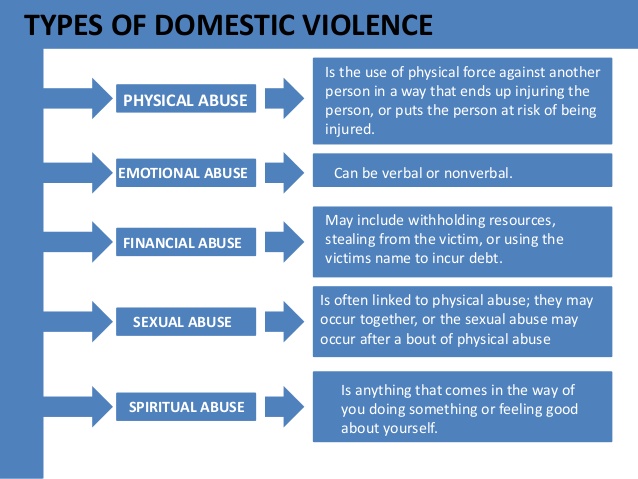
Consequences and solutions to domestic violence
Consequences include:
1. Stress
2. Mental illness(instability)
3. Separation and divorce
4. Death
Solutions:
1. Preaching and practicing of love among family members.
2. Parents must discuss with a marriage counselor who will listen attentively to them and give advice without blaming any party.
3. Dialogue and avoidance of communication gap.
4. Provision of adequate accommodation for family members.
5. Parents should settle their differences immediately and live in peace.
6. Parents should know and respect the rights of their children.
Evaluation
1. What is violence?
2. Explain domestic violence
3. List 6 causes of domestic violence
Assignment
Workbook on Home Economics New Concept for Nigeria Jnr. Sec. Schools Bk.1 (pgs.32-33).
Sub-Topic 1: Meaning and characteristics of a home, Differences between a home and a house.
A Home is a house where the family lives and share life experiences.
A home
Characteristics of a home
1. It is well secured.
2. It is well located.
3. It has basic convenience like toilets, bathrooms, kitchen, and recreational facilities.
4. It is well-ventilated.
5. It should provide comfort and relaxation for the family members.
6. It is inviting.
7. It has functional areas like sitting, dining room, bedrooms etc.

A house
A house is just a building. It includes different types of shelter in which people can live. A house that offers opportunities to meet the needs of a family becomes a home.

Difference between a home and a house
1. People always live in a home. People may not live in a house.
2. A home serves only as a dwelling place. A house can be used for other purposes.
3. A home has functional areas. A house may not have functional areas e.g. ware houses.
4. A home provides comfort and relaxation. A house may not provide comfort and relaxation depending on use.
5. A home should well-ventilated. Ventilation may not be considered in the structure.

Evaluation
1. Differentiate between a home and a house.
2. Mention 5 characteristics of a home.
Sub-Topic 2: Domestic violence and the consequences and solutions to domestic violence
Violence is behaviour carried out to hurt other people physically. Violent actions may result in damage to property or in injury to people. It can even lead to death.
Domestic violence
This is the type of violence that occurs in the home. It can be between husband and wife, among siblings, from parents to children, or other persons living in the home.

Causes of domestic violence
1. Misunderstanding between family members.
2. Impatience.
3. Bad temper-arguments, angry ways of speaking or reacting.
4. Lack of love
5. Poor family values and upbringing.
6. Poverty.
7. Lack of faith in God.
8. Ignorance
9. Jealousy.
10. Poor self image- people who think lowing of themselves tend to have inferiority complex and therefore behave unreasonably.
Forms of domestic violence
Domestic violence comes in various forms. The common forms are:
1. Verbal confrontation.
2. Physical fighting.
3. Wife battering
4. Land dispute
5. Child revolting against parents.

Consequences and solutions to domestic violence
Consequences include:
1. Stress
2. Mental illness(instability)
3. Separation and divorce
4. Death
Solutions:
1. Preaching and practicing of love among family members.
2. Parents must discuss with a marriage counselor who will listen attentively to them and give advice without blaming any party.
3. Dialogue and avoidance of communication gap.
4. Provision of adequate accommodation for family members.
5. Parents should settle their differences immediately and live in peace.
6. Parents should know and respect the rights of their children.
Evaluation
1. What is violence?
2. Explain domestic violence
3. List 6 causes of domestic violence
Assignment
Workbook on Home Economics New Concept for Nigeria Jnr. Sec. Schools Bk.1 (pgs.32-33).
Week 8
Topic: Housing the family-(a) Types of houses. (b) Location and choice of a family house (factors that influence the choices).
Sub-Topic 1: Types of houses.
Every family lives in a house. There are different types of houses. Each type is known by the kind of material used in building it. Certain factors must be considered before choosing the type of house we want.
Types of houses in Nigeria
We have different types of houses in Nigeria. These include:
1. Mud houses – usually built with red mud and roofed with thatched or corrugated iron sheets. These types are mostly seen in rural areas.
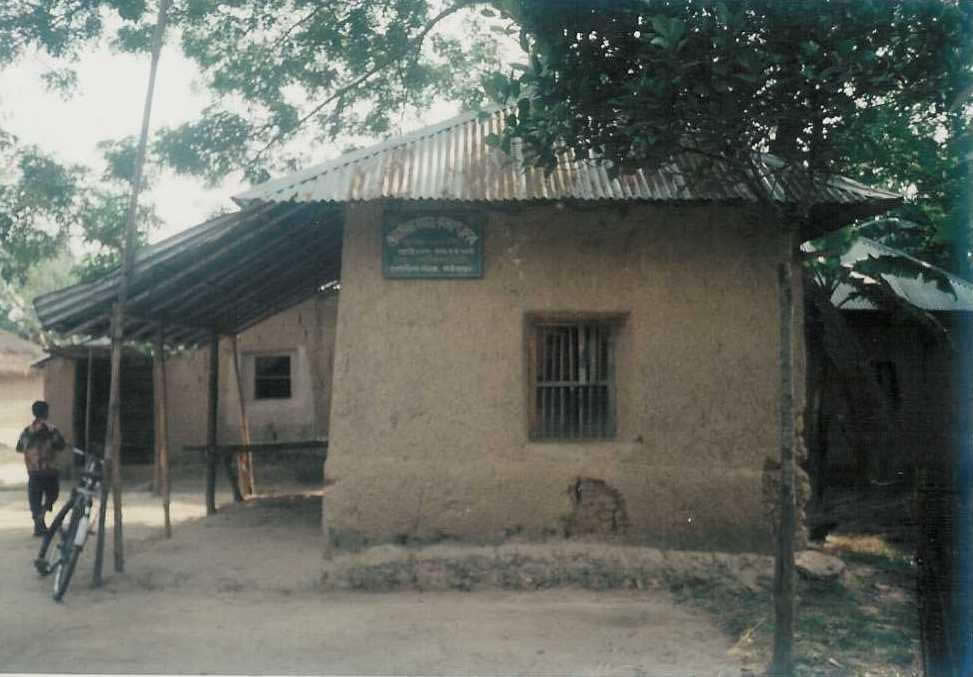
Mud house with corrugated iron sheets
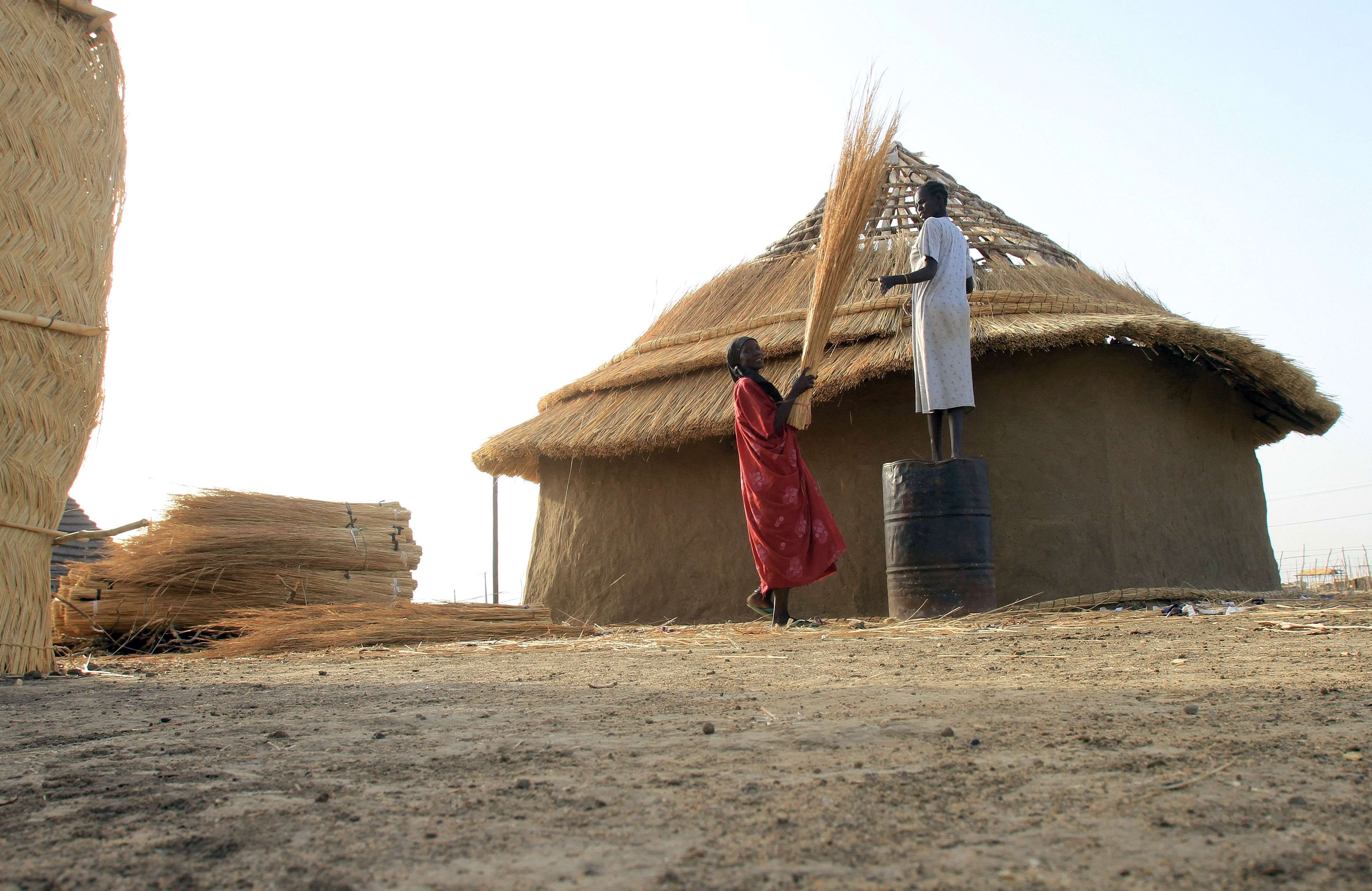
Mud house with thatched roof
2. Wooden houses – They are built with bamboo sticks or wood and have thatched or corrugated roofs. They are Mostly found in rural and fishing community i.e. riverine area.
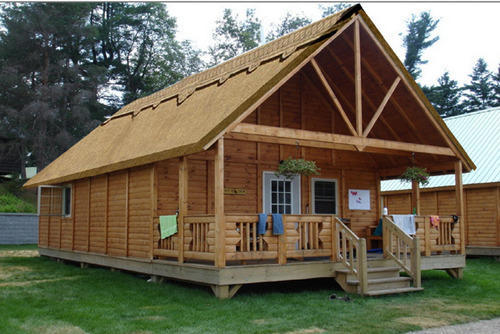
A wooden house
3. Modern houses – These are built with cement blocks, bricks or stones. Their roofs could either be corrugated iron sheet, (zinc), or asbestos roofing.
Modern houses can be storey buildings, bungalow or modern skyscraper. They are found in towns and big cities.
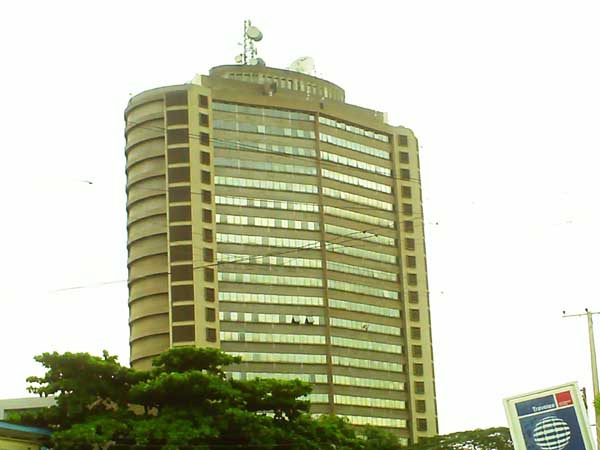
A modern skyscraper
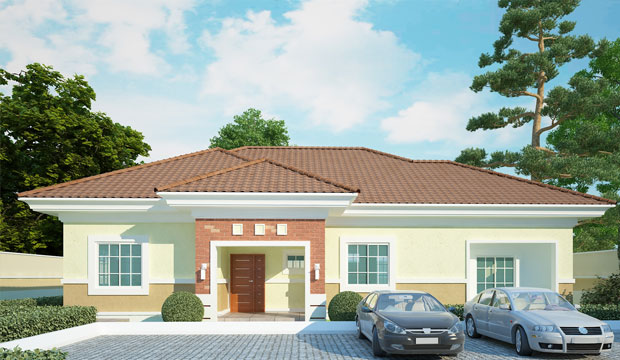
Bungalow building

Storey building
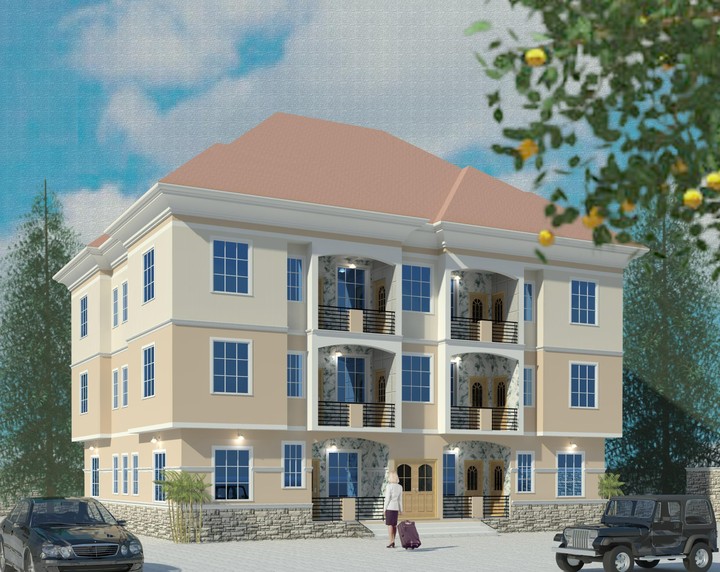
A modern Storey building
Evaluation
List and the types of houses we have in Nigeria.
Sub-Topic 2: Location and choice of a family house (factors that influence the choices)
Some factors are responsible for the location and choices of family house. These are:
1. Economic factors – The type of house a family builds or chooses depends on the financial strength of the family. The high income earning family can build big houses while low income earners can only afford smaller ones.
2. Site/Location of the house. The family should choose to build or rent a house that is near or easily accessible to:
i. Children’s school
ii. Market or shopping centre
iii. Place of work
iv. The location must also be safe in terms of health and security
3. Size of the family – A large family will require a larger house than a smaller family
4. Family life cycle: the number of people in the family will determine their choice of a house. This include,
(a) The beginning family: this is a stage when a young couple needs a small apartment.
(b) The expanding family: this is a stage when the family increases in size, they will need a bigger apartment.
(c) The contracting family; this is a stage when only the couple are left alone, so they need a small apartment.
5. Special needs of family members. A persons with athritis or leg problem may need to live in a bungalow and not in storey buildings.
6. Design of the house: The layout or plan of the house must suit the family
7. Ventilation and lighting – A good house for any category of family should be well lighted and ventilated.
8. Lifestyle of the family – This consideration is based on the interest and activities of the family

Evaluation
List and explain 5 factors responsible for the choice of family houses.
Assignment
Workbook on Home Economics New Concept for Nigeria Jnr. Sec. Schools Bk.1 (ps.34).
Activities
Collect pictures of different types of houses and make an album
Sub-Topic 1: Types of houses.
Every family lives in a house. There are different types of houses. Each type is known by the kind of material used in building it. Certain factors must be considered before choosing the type of house we want.
Types of houses in Nigeria
We have different types of houses in Nigeria. These include:
1. Mud houses – usually built with red mud and roofed with thatched or corrugated iron sheets. These types are mostly seen in rural areas.

Mud house with corrugated iron sheets

Mud house with thatched roof
2. Wooden houses – They are built with bamboo sticks or wood and have thatched or corrugated roofs. They are Mostly found in rural and fishing community i.e. riverine area.

A wooden house
3. Modern houses – These are built with cement blocks, bricks or stones. Their roofs could either be corrugated iron sheet, (zinc), or asbestos roofing.
Modern houses can be storey buildings, bungalow or modern skyscraper. They are found in towns and big cities.

A modern skyscraper

Bungalow building

Storey building

A modern Storey building
Evaluation
List and the types of houses we have in Nigeria.
Sub-Topic 2: Location and choice of a family house (factors that influence the choices)
Some factors are responsible for the location and choices of family house. These are:
1. Economic factors – The type of house a family builds or chooses depends on the financial strength of the family. The high income earning family can build big houses while low income earners can only afford smaller ones.
2. Site/Location of the house. The family should choose to build or rent a house that is near or easily accessible to:
i. Children’s school
ii. Market or shopping centre
iii. Place of work
iv. The location must also be safe in terms of health and security
3. Size of the family – A large family will require a larger house than a smaller family
4. Family life cycle: the number of people in the family will determine their choice of a house. This include,
(a) The beginning family: this is a stage when a young couple needs a small apartment.
(b) The expanding family: this is a stage when the family increases in size, they will need a bigger apartment.
(c) The contracting family; this is a stage when only the couple are left alone, so they need a small apartment.
5. Special needs of family members. A persons with athritis or leg problem may need to live in a bungalow and not in storey buildings.
6. Design of the house: The layout or plan of the house must suit the family
7. Ventilation and lighting – A good house for any category of family should be well lighted and ventilated.
8. Lifestyle of the family – This consideration is based on the interest and activities of the family

Evaluation
List and explain 5 factors responsible for the choice of family houses.
Assignment
Workbook on Home Economics New Concept for Nigeria Jnr. Sec. Schools Bk.1 (ps.34).
Activities
Collect pictures of different types of houses and make an album
Week 9
TOPIC: Family Needs and Resources: (a) Meaning and types of family needs. (b) Meaning, types and characteristics of family resources.
Sub-Topic 1: Meaning and types of family needs.
Family needs are many but the resources for meeting them are limited. It is therefore necessary to find good ways of managing the resources to meet the varying needs of the family. Before learning how to manage the resources we must be well acquainted with the needs of the family.
Family Needs
Family needs are the things that are essential for the family physical, emotional mental and social health.
Needs and wants – There is a clear cut difference between needs and wants. Needs are basic and essential things for man’s good life while wants are those things you desire even though they are not essential for your health and well being.
Types of Needs
1. Basic/Primary Needs – these are very important needs in the family which the family cannot do without. They are needed by family members for survival. They are:
a. Food
b. Clothing
c. Shelter
d. Health care

2. Secondary Needs: These are those things the family wants. They are not as important as the primary needs. This implies that the family can continue to exist without the provision of secondary needs.
Examples of secondary needs are: Pocket money for the family members, extra clothing etc.
Evaluation
1. How will you differentiate between needs and wants?
2. Mention 4 primary needs in the family
3. State the two types of needs in the family
Sub-Topic 2: Meaning, types and characteristics of family resources.
Family resources
These are those things which the family can use to meet their needs and reach their goals. The family has different classes of resources:
a. Human and
b. Non human/material resources

Human Resources
These are the resources which exist within an individual. They are personal to each person. Examples are knowledge, skill, imagination/creativity, energy and time.
Non-human/material resources
1. Money: This is a very important resource that can be used to get most family needs. Money is used to measure the value of the property we have.
2. Possessions – These are things owned by the family, which they can be used to achieve some goals family possession could be grouped into
i. Durable e.g. furniture, houses and appliances and
ii. Consumable possession e.g. food, paper, pen, clothes etc. when these possessions are well managed, they will have longer useful life.
Other resources the family can use are community and natural resources.
Characteristics of resources
1. Utility – This mean that the resources can be applied for producing goods and services.
2. Accessibility – This means that resources must exist in hand or on reserve for goal attainment.
3. Interchangeability – When a resource is substitute with another, it is said to be inter changeable
4. Manageability – All resources are to some extend manageable i.e. controllable for the purpose of goal attainment.
Evaluation
1. What are resources?
2. How can you classify resources?
3. Mention 4 characteristics of resources.
Assignment
Workbook on Home Economics New Concept for Nigeria Jnr. Sec. Schools Bk.1 (ps.35).
Reading Assignment
Anyakoha Home Economics for junior sec. 2010 Edition, page 82-86
[pdf=https://penwriteng.com/school/download/ ... view&id=50[/pdf]
Sub-Topic 1: Meaning and types of family needs.
Family needs are many but the resources for meeting them are limited. It is therefore necessary to find good ways of managing the resources to meet the varying needs of the family. Before learning how to manage the resources we must be well acquainted with the needs of the family.
Family Needs
Family needs are the things that are essential for the family physical, emotional mental and social health.
Needs and wants – There is a clear cut difference between needs and wants. Needs are basic and essential things for man’s good life while wants are those things you desire even though they are not essential for your health and well being.
Types of Needs
1. Basic/Primary Needs – these are very important needs in the family which the family cannot do without. They are needed by family members for survival. They are:
a. Food
b. Clothing
c. Shelter
d. Health care

2. Secondary Needs: These are those things the family wants. They are not as important as the primary needs. This implies that the family can continue to exist without the provision of secondary needs.
Examples of secondary needs are: Pocket money for the family members, extra clothing etc.
Evaluation
1. How will you differentiate between needs and wants?
2. Mention 4 primary needs in the family
3. State the two types of needs in the family
Sub-Topic 2: Meaning, types and characteristics of family resources.
Family resources
These are those things which the family can use to meet their needs and reach their goals. The family has different classes of resources:
a. Human and
b. Non human/material resources

Human Resources
These are the resources which exist within an individual. They are personal to each person. Examples are knowledge, skill, imagination/creativity, energy and time.
Non-human/material resources
1. Money: This is a very important resource that can be used to get most family needs. Money is used to measure the value of the property we have.
2. Possessions – These are things owned by the family, which they can be used to achieve some goals family possession could be grouped into
i. Durable e.g. furniture, houses and appliances and
ii. Consumable possession e.g. food, paper, pen, clothes etc. when these possessions are well managed, they will have longer useful life.
Other resources the family can use are community and natural resources.
Characteristics of resources
1. Utility – This mean that the resources can be applied for producing goods and services.
2. Accessibility – This means that resources must exist in hand or on reserve for goal attainment.
3. Interchangeability – When a resource is substitute with another, it is said to be inter changeable
4. Manageability – All resources are to some extend manageable i.e. controllable for the purpose of goal attainment.
Evaluation
1. What are resources?
2. How can you classify resources?
3. Mention 4 characteristics of resources.
Assignment
Workbook on Home Economics New Concept for Nigeria Jnr. Sec. Schools Bk.1 (ps.35).
Reading Assignment
Anyakoha Home Economics for junior sec. 2010 Edition, page 82-86
[pdf=https://penwriteng.com/school/download/ ... view&id=50[/pdf]
